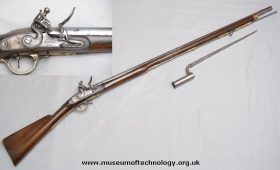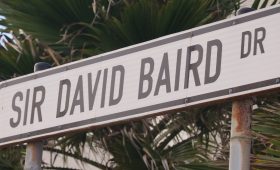Another common question I get when describing the advance of the British troops across the Blaauwberg battlefield is “why did the British always wear bright red jackets”? This starts another conversation around the assumption that it was to stop blood showing up on injured soldiers. This is one of these myths which is far from the truth, with the real reason being closer to costs and identification than showing up blood.
So where did the wearing of the red tunics originate and what is the history of the famous outfits we now see in regular military displays in the UK?
The use of red coats and uniforms being used by regiments in England have been recorded back to the Tudor Yeoman Guards in 1485 and also the 17th century English Civil war. In those days it was normal for the General of the regiment to buy the outfits for his troops and therefore the design was under his control. The first recognised “uniform” of a whole army came in February 1645 with the formation of the New Model Army following the Parliamentary victory in the Civil War. The army was made up of 22,000 men in 12 infantry regiments, 11 Cavalry regiments, a regiment of Dragoons and an Artillery. The infantry in particular were provided with jackets of Venetian Red with facings of various colours. As time passed the facings and lining turn-outs became identification colours to identify specific regiments. Having a uniform colour for all men was extremely important in this period to ensure that in the height of a battle men could recognise their comrades. When advancing and engaging the enemy being able to see your own lines through the dense smoke typical of the residue from black powder exploding was highly important. Most combat involved close man-to-man encounters so being able to make out friend or foe was enhanced by having a uniform that stands out. The picture at the top of this post displays this in great detail. The painting is of the 93rd Highland Regiment at the battle advancing in to the smoke that is hanging over the battlefield. This demonstrates how important being able to see colours of the men around you would be. Distinguishing your own regiment would then be made by seeing the regimental colours of the flag flown above the men. Commands would be made by drums as shouting was of no use in the height of battle.
The tunics were made of a very tough woven woolen material (broadcloth) that was double shrunk to provide a dense fabric. So dense that the use of hems was not required as fraying was not an issue when it was cut. This made repairs easy for the man in the field, cuts and tears being easily sewn back together. The colour known as Rose Madder (private soldiers) was a vegetable based dye which only required a single process making the manufacture quick and cheap, just what the war office liked. NCOs and full officers purchased their tunics from outfitters and their material (Spanish wool) was dyed with a more durable solution using cotcheniel and this was generally brighter than the dull red of the privates. After many years away on campaigns the private soldiers tunics would become very faded to a point when some would be more pink than red.
So in reality the red tunics used by the foot soldiers of the British army in the 18th and 19th centuries evolved from financial origins rather than hiding injuries. It was cheap to produce red tunics for the 1000s of men in the infantries and this had the benefit of being highly visable to all around. Not all soldiers wore the red uniforms, as muskets evolved to rifles so the sharpshooters using them became identified by wearing green uniforms. These men did not necessarily need to be identified by their comrades as they would be skirmishing ahead or on the edges of the main ranks.
The last noted use of the red tunic in battle was on the 30th December 1885 in Sudan. By this time Khaki uniforms were becoming more popular following their introduction in the Indian regiments.
Acknowledgements for this post to the Argyll & Sutherland RHQ, at Stirling Castle Museum (Scotland) for supplying the copy of the painting of the 93rd Regiment, and to Wikipedia for the information.





